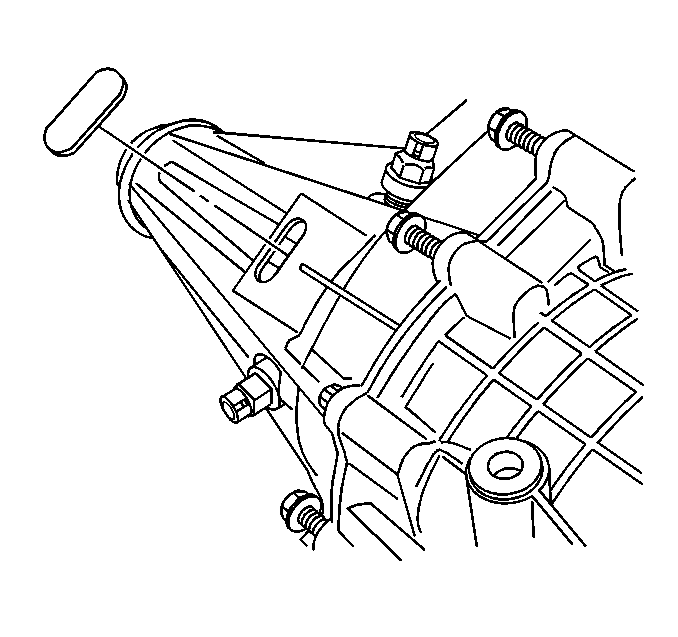Tools Required
| • | J 3289-20 Holding Fixture |
| • | J 8092 Universal Driver |
| • | J 22873 Mainshaft Bushing Installer |
| • | J 36370 Drive Sprocket Needle Bearing Installer |
| • | J 37668-A Output Shaft Seal Installer |
| • | J 42737 Sector Bearing Installer |
| • | J 42738 Seal Installer |
| • | J 44295 Clutch Pack Shimming Kit |
| • | J 44636-1 Front Output Shaft Seal Protector |
| • | J 44636-2 Front Output Shaft Seal Installer |
| • | J 45237 Input Gear Thrust Bearing Installer |
| • | J 45380 Transfer Case Rear Bushing Remover and Installer |
| • | J 45759 Assembly Fixture |
- Install the mounting studs to the height of 29.5-30.5 mm (1.16-1.20 in).
- Attach the J 45759 to the front transfer case using the adapter studs. All of the assembly procedures can be performed with the case mounted to the J 45759 .
- Install the J 45759 (2) into the J 3289-20 (1) and secure with the pivot pin.
- Install the front output shaft bearing.
- Install the front output shaft bearing retaining ring.
- Using the J 8092 (1) and the J 36370 (2), install the front output shaft rear bearing.
- Using the J 42737 , install the control actuator lever shaft bearing.
- Lubricate the control actuator lever shaft bearing.
- Install the control actuator lever shaft.
- Install the NEW retaining ring for the control actuator lever shaft. Ensure the retaining ring is fully seated.
- Using the J 22873 and a hydraulic press, install the tone wheel on the front output shaft.
- Install the front output shaft assembly. Use a soft-face hammer to tap the shaft into the bearing.
- Install the front output shaft retaining ring.
- Install the pilot bearing in the input shaft, using the J 8092 (1) and the J 45237 (2).
- Install the input shaft bearing.
- Install the input shaft assembly.
- Install the input shaft bearing inner retaining ring.
- Install the input shaft retaining ring onto the input shaft.
- Install the clutch lever assembly.
- Install new O-ring seals on the clutch lever pivot pins.
- Apply threadlock GM P/N 12345493 (Canadian P/N 10953488), or equivalent, to the clutch lever pivot pin threads.
- Install both clutch lever pivot pins with the aluminum washers and O-ring seals.
- Install the shift detent plunger.
- Install the shift detent spring.
- Lightly lubricate a NEW shift detent plunger O-ring seal with transfer case fluid.
- Install the O-ring seal on the shift detent spring bolt.
- Install the shift detent spring bolt in the front transfer case.
- Install the rear output shaft oil restrictor flush with the end of the shaft.
- Install the clutch housing bearing, using the J 8092 (1) and the J 36370 (2).
- Clamp the rear output shaft in a soft-jaw vise with the front end facing up.
- Install the clutch housing on the rear output shaft.
- Install the clutch hub.
- Install the clutch hub oil restrictor plate.
- Install the backing plates.
- Install a friction clutch pressure plate.
- Install a steel clutch pressure plate.
- Continue to install the friction and the steel clutch plates, alternating until 8 friction plates and 7 steel plates are installed.
- Install the clutch hub retaining ring.
- Securely install the base plate (3) of the J 44295 in a vise with the machined surface of the locating tabs facing up.
- Install the assembled mainshaft with the drum, the inner clutch plates, and the outer separator plates on the base plate (3) of the J 44295 .
- Install the weight (1) of the J 44295 on top of the assembled clutch plates.
- Place the gage block (2) of the J 44295 on 1 of the locating tabs of the base plate (3) of the J 44295 .
- Using a feeler gage, measure between the gage block (2) and the weight (1) of the J 44295 .
- Measure with the gage block (2) and the feeler gage on the remaining 2 locating tabs of the base plate (3).
- Take the average of the 3 measurements. This is the required shim thickness.
- Select the correct shim or shims from the clutch plate shim package, plus or minus 0.10 mm (0.004 in). You may use a combination of 2 shims to obtain the correct thickness.
- Remove the weight (1) of the J 44295 .
- Install the shim or shims.
- Using a suitable press plate and a hydraulic press, press the clutch pressure plate bearing hub in the clutch pressure plate bearing. Ensure the bearing inner bearing race is supported.
- Install the clutch pressure plate bearing and hub in the clutch pressure plate.
- Install the clutch pressure plate spring.
- Align the tabs on the clutch pressure plate with the grooves in the clutch hub and install the clutch pressure plate assembly. Ensure the spring is installed in the groove of the pressure plate.
- Install the clutch pressure plate retaining ring. Push down on the clutch pressure plate to access the retaining ring groove.
- Align the tab on the clutch pressure plate bearing hub with the clutch lever.
- Install the rear output shaft assembly. Turn the rear output shaft to align the splines with the input shaft.
- Install the drive chain and sprockets. The blue links on the chain must face up, toward the rear of the transfer case.
- Install the drive sprocket retaining ring.
- Install the driven sprocket retaining ring.
- Inspect the rear output shaft to identify as an original design (2) or the replacement design (1).
- If an original design rear output shaft, install the oil pump retaining ring onto the rear output shaft. Ensure the retaining ring is not positioned over the oil hole on the rear output shaft.
- Install the oil pump pick up tube seal.
- Install the oil pump assembly.
- Install the oil pump screen.
- Install the connector on the oil pump screen.
- Install the oil pump suction pipe to the oil pump.
- Connect the oil pump suction pipe to the connector.
- Install the magnet.
- If an original design rear output shaft, install the oil pump wave washer.
- Install the speed reluctor wheel.
- Install the rear output shaft bearing with the retaining ring groove facing up.
- Install the rear output shaft bearing retaining ring.
- If necessary, install the oil pump wear sleeve.
- Stake the oil pump wear sleeve pin to hold the sleeve in place, if star shaped hole.
- Install the locating pins in the front case, if necessary.
- Apply a 3 mm (1/8 in) bead of RTV sealant GM P/N 12345739 (Canadian P/N 10953541) to the front case sealing surface.
- Install the rear case half assembly.
- Insert snap ring pliers in the access opening.
- Using the snap ring pliers, open the outer retaining ring for the rear output shaft bearing.
- Insert a rubber coated screwdriver into 1 of the speed sensor holes and lift up the speed reluctor wheel, then seat the retaining ring.
- Install the new case bolts/studs, the washers, and the brackets.
- Using the J 42738 , install the input shaft seal.
- Using the J 45380 , install a new rear output shaft bushing.
- Using the J 37668-A , install the rear output shaft seal.
- Install the J 44636-2 on the front output shaft.
- Install the front output shaft seal on the J 44636-2 .
- Using the J 44636-1 , install the front output shaft seal.
- Install the dust seal.
- Install new O-ring seals on the vehicle speed sensors (VSS).
- Lubricate the VSS O-ring seals with transfer case fluid.
- Install the left rear VSS.
- Install the right rear VSS.
- Install the front VSS.
- Install the vent tube elbow, if needed.
- Install the encoder motor gasket.
- Rotate the control actuator shaft to align to the encoder motor output shaft.
- Install the encoder motor.
- Install the encoder motor mounting bolts.
- Install the rubber plug.
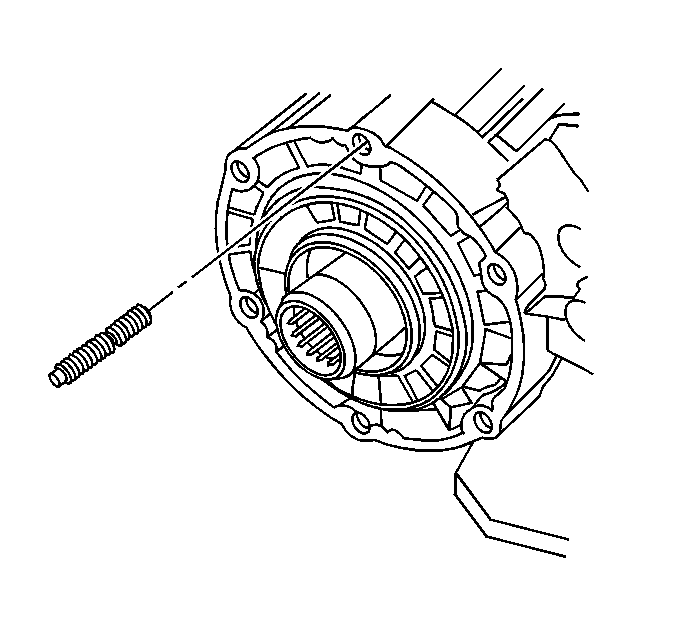
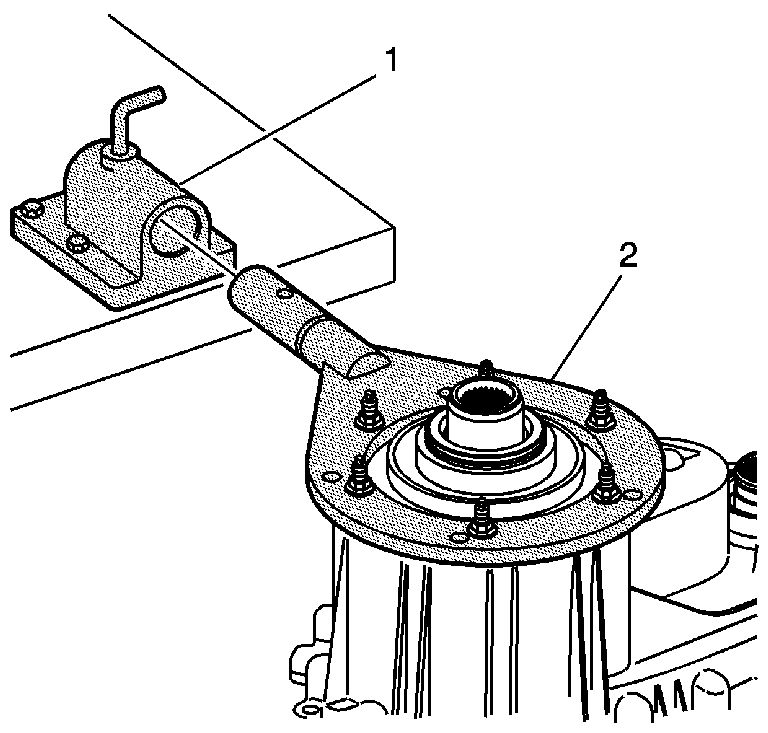

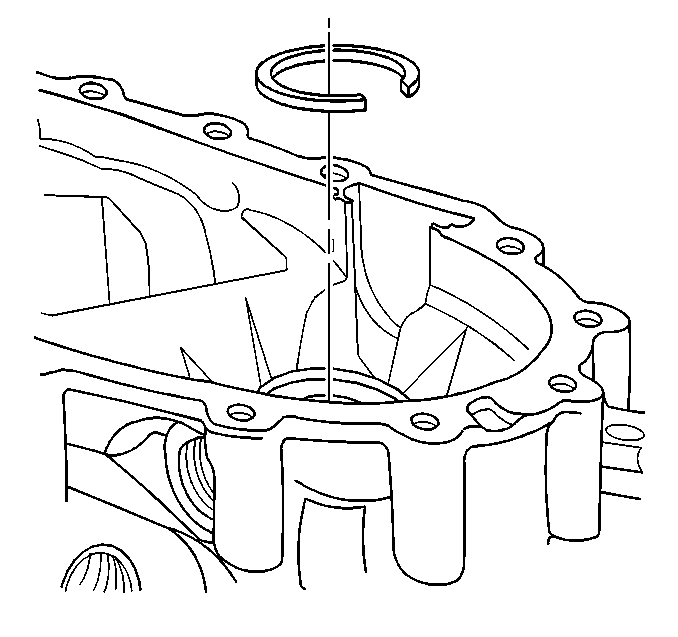

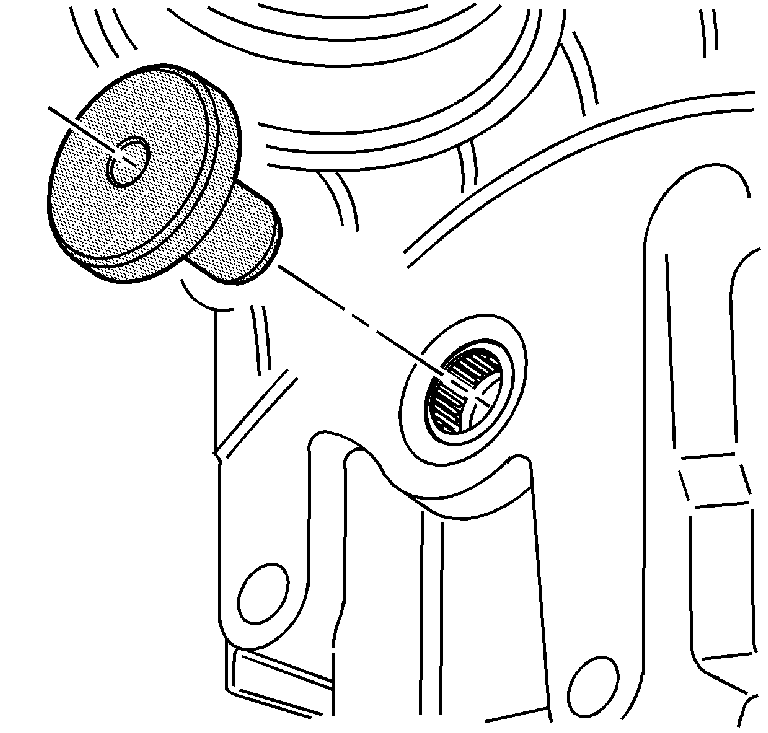
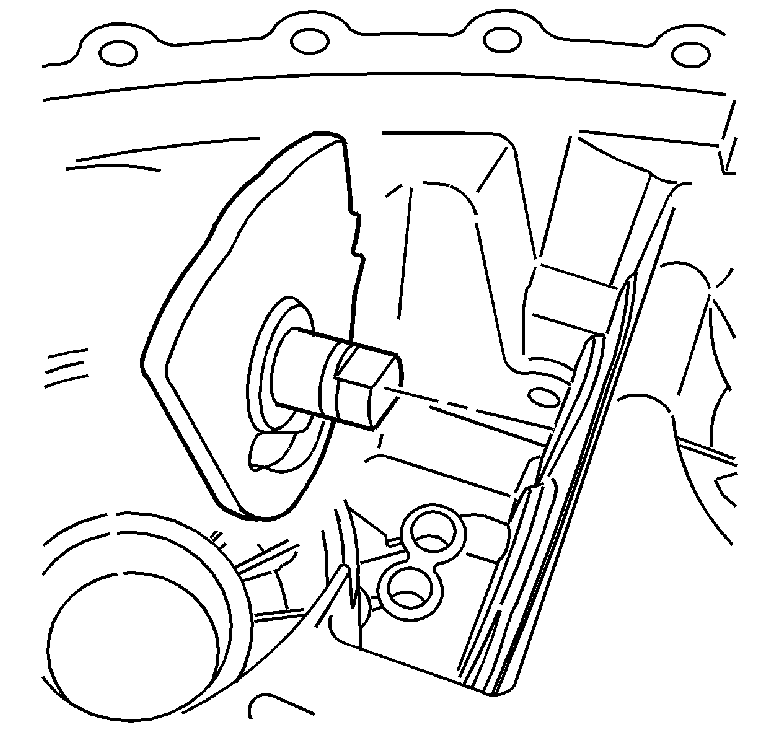
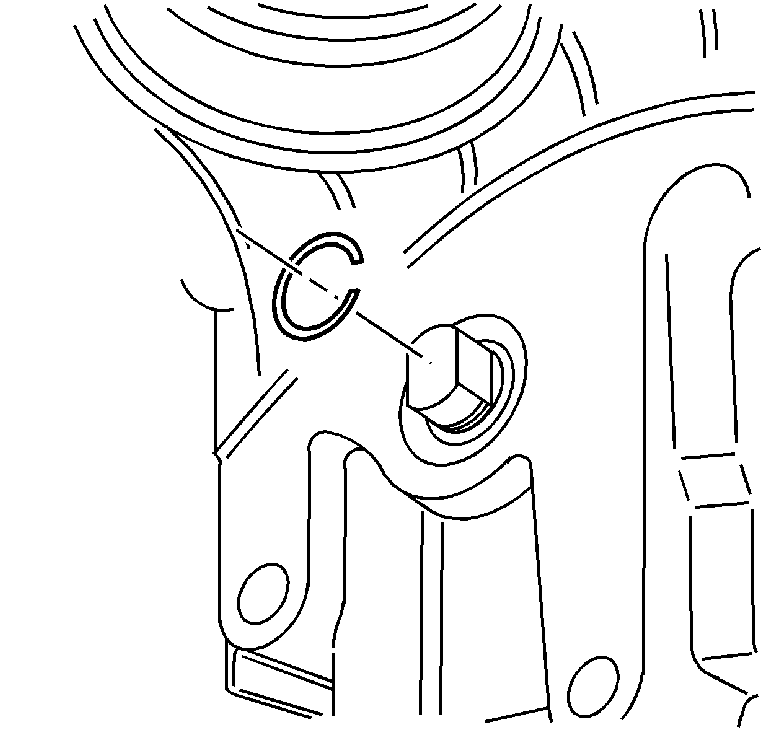
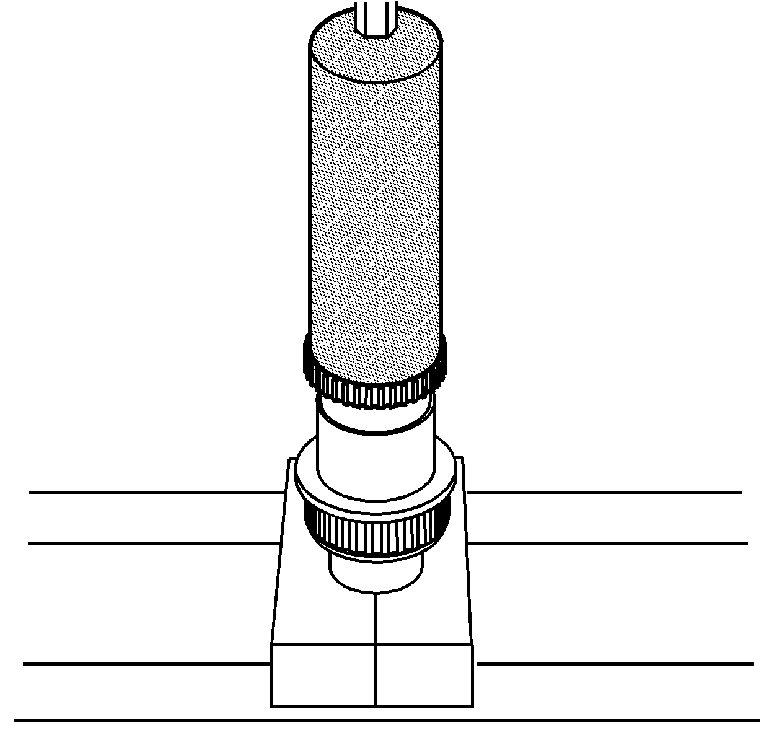
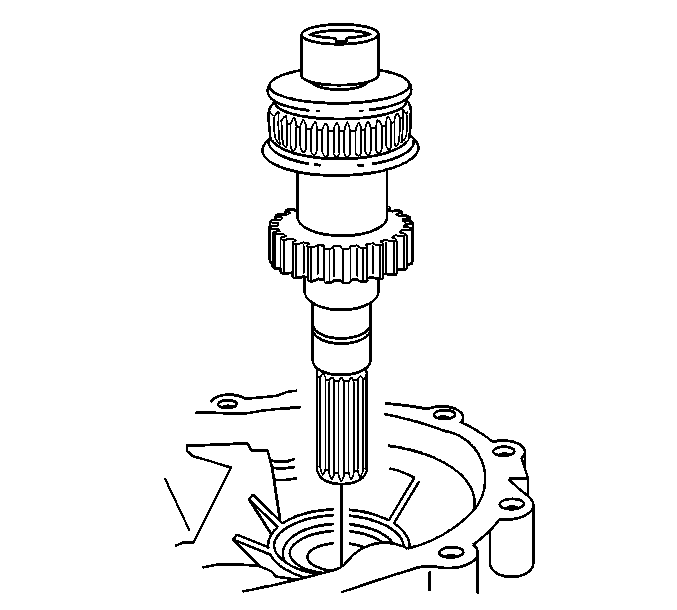
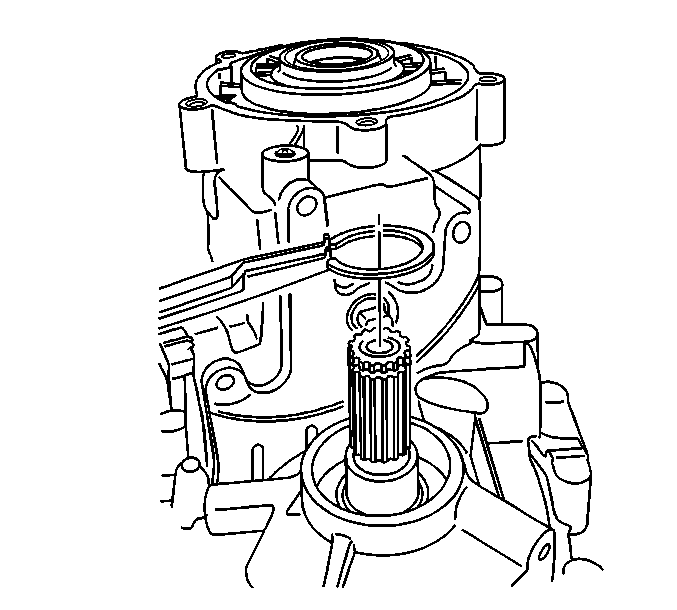
Important: Do not scratch the oil seal surface on the front input shaft while installing the retaining ring.
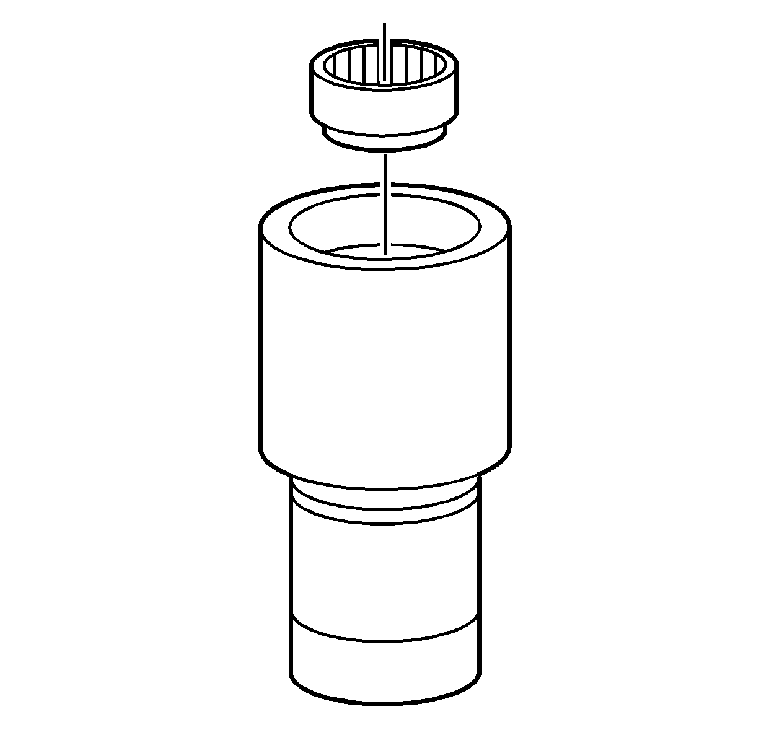
Important: The bearing installed depth is 33 mm (1.30 in) from the face of the gear, or just below the taper of the bore.
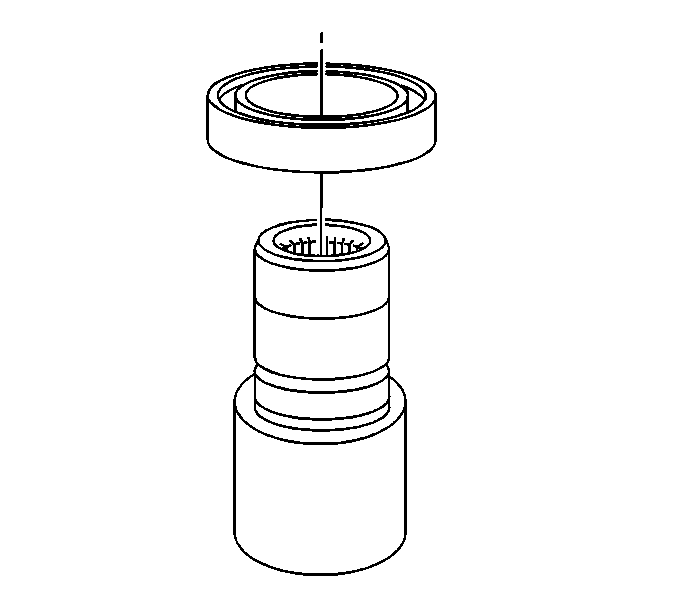
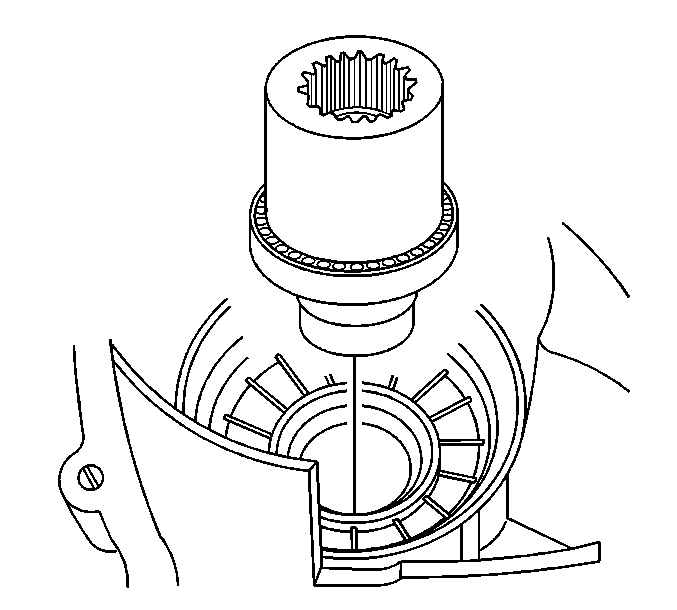
| • | Ensure the bearing is square to the case. |
| • | Use a soft-face hammer to tap the shaft and bearing into the case. |
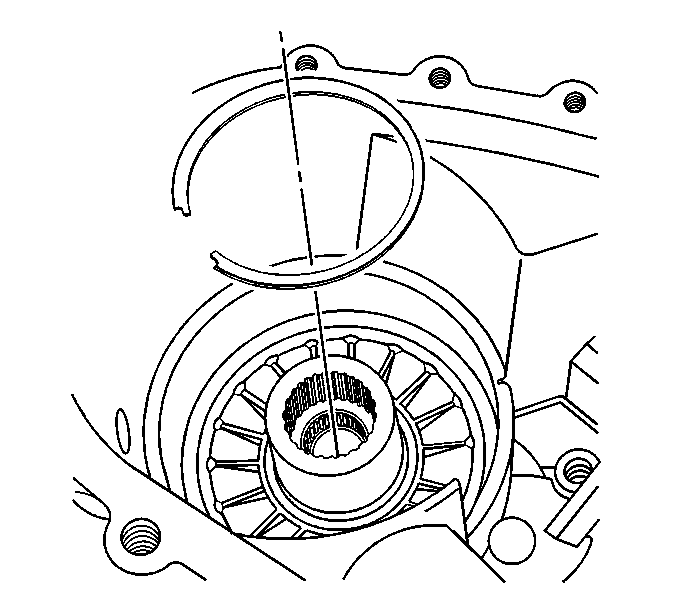
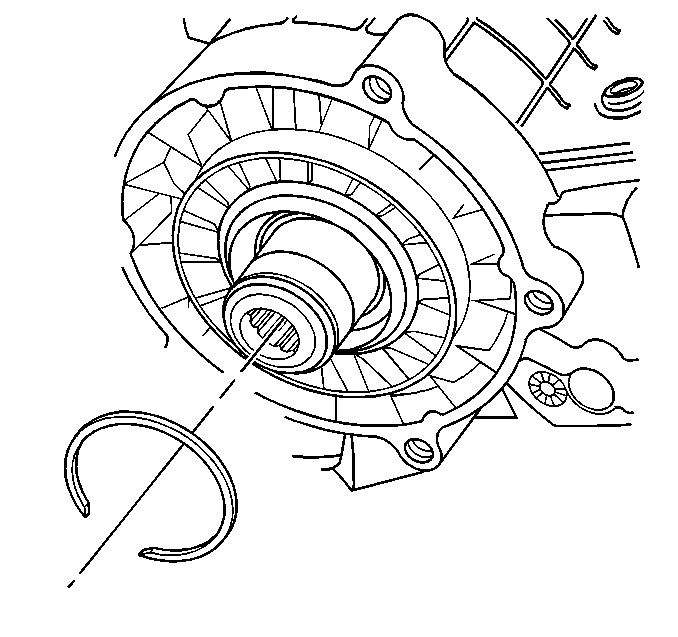
| • | Use snap ring pliers to position the retaining ring onto the input shaft. |
| • | During installation of the retaining ring, do not scratch/damage the seal surface area of the input shaft with the retaining ring. |
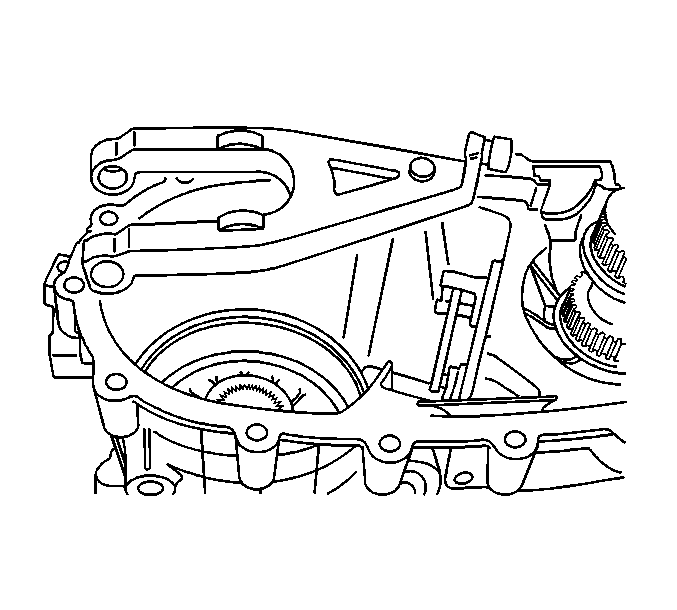
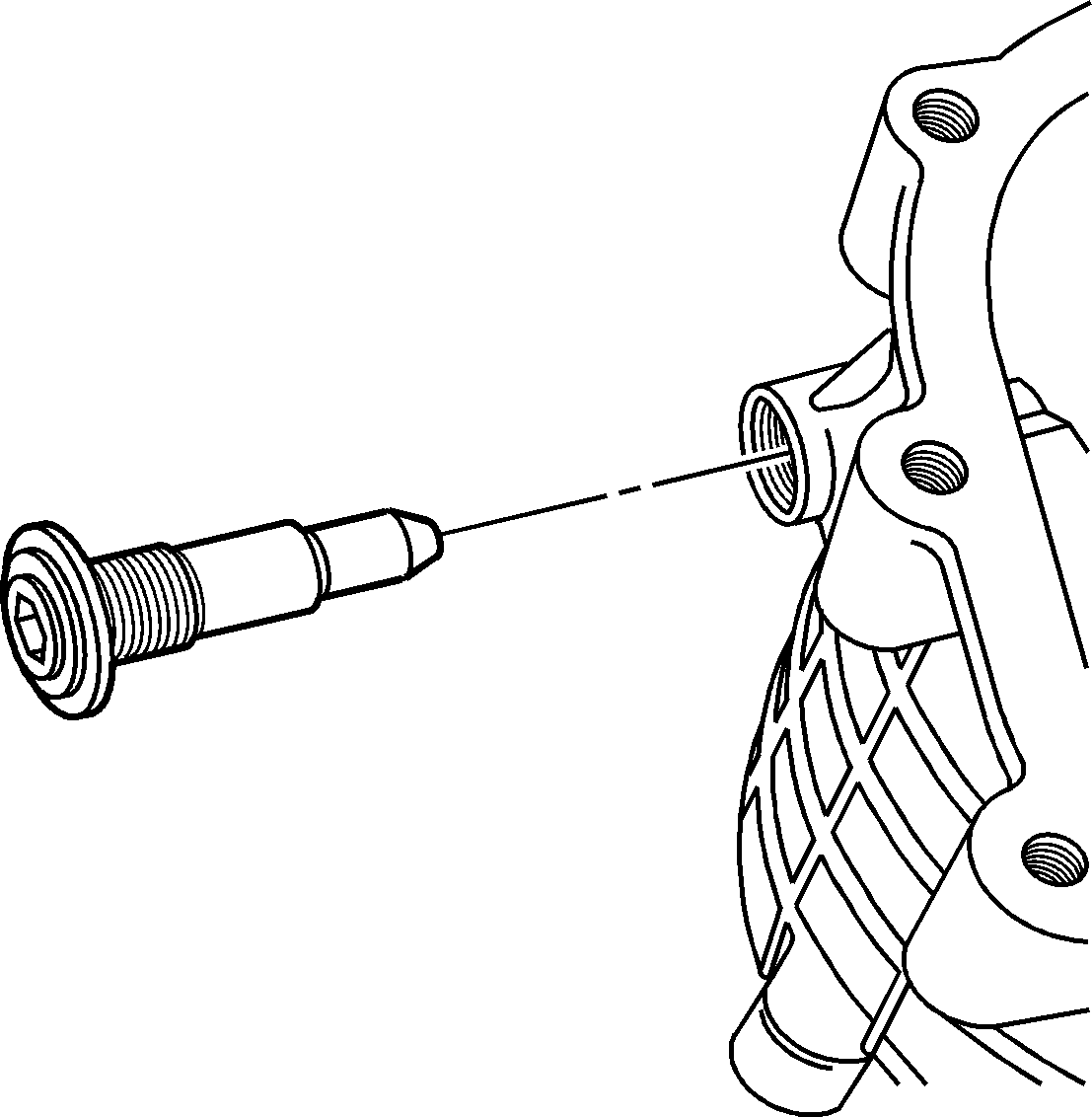
Notice: Refer to Fastener Notice in the Preface section.
Tighten
Tighten the clutch lever pivot pins to 61 N·m (45 lb ft).
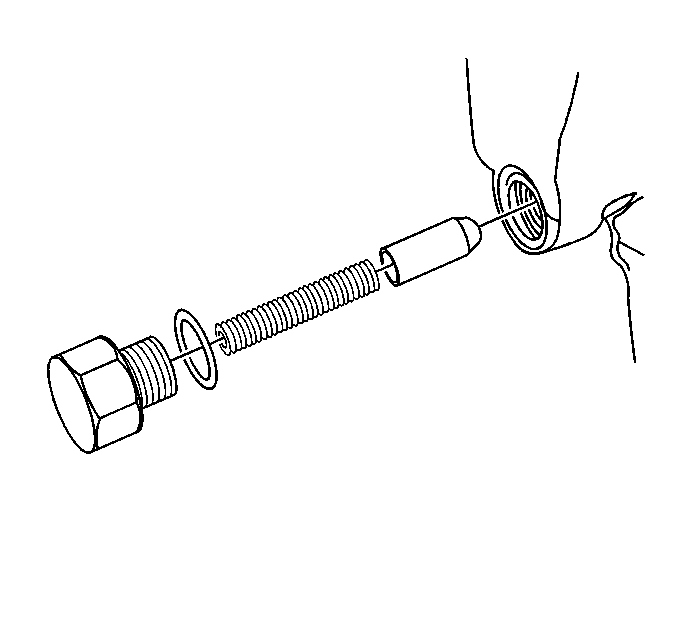
Important: Ensure that the shift detent plunger is seated correctly on the control actuator lever.
Tighten
Tighten the shift detent spring bolt to 17 N·m (13 lb ft).

Important: The following service procedure is to be performed only if the rear output shaft is new.
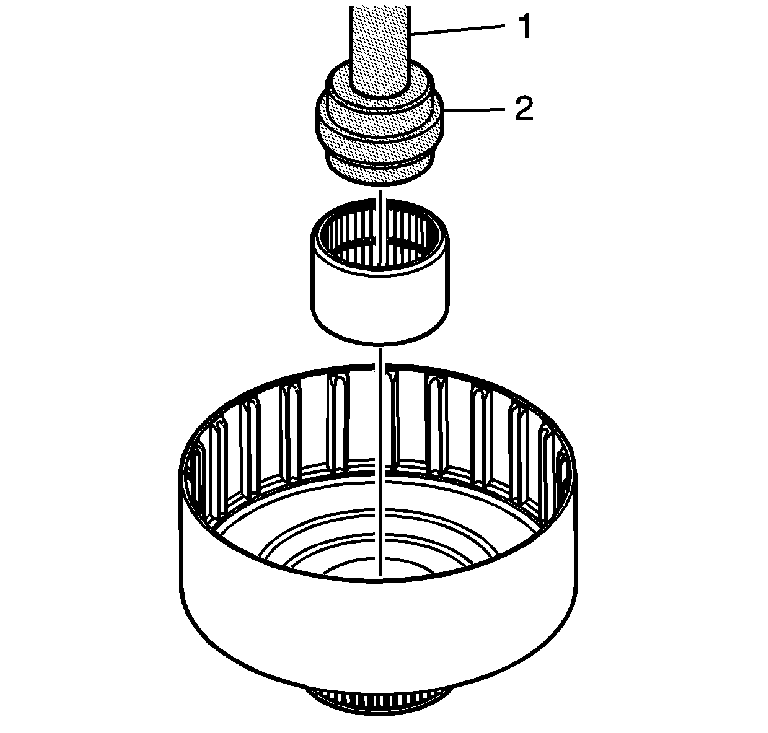
Important: In order to position the bearing at the proper depth, ensure that the double shoulder of the J 36370 is against the bearing.

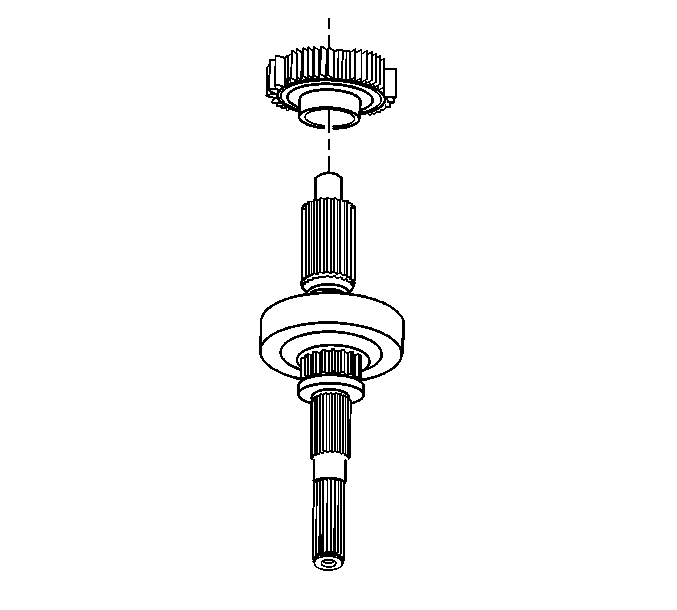
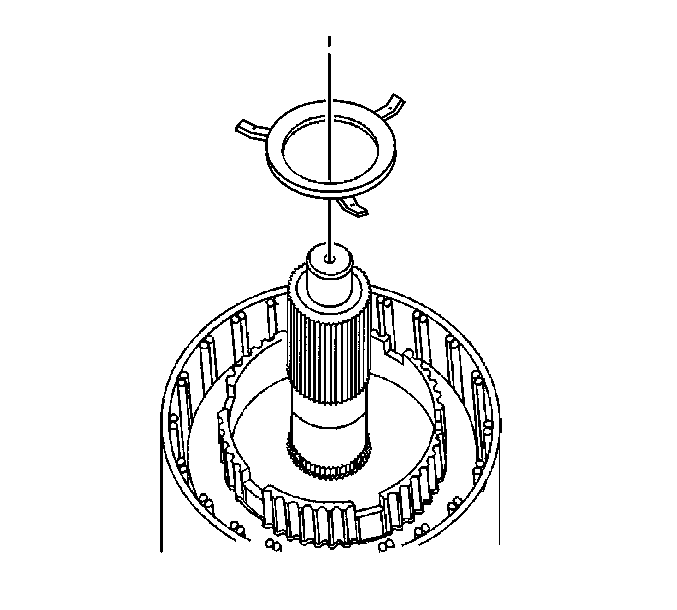
Important: Ensure the clutch hub oil restrictor plate fingers point up when installed.

Important: When installing the clutch plates, ensure that the inner lip of the backing plate is facing down.
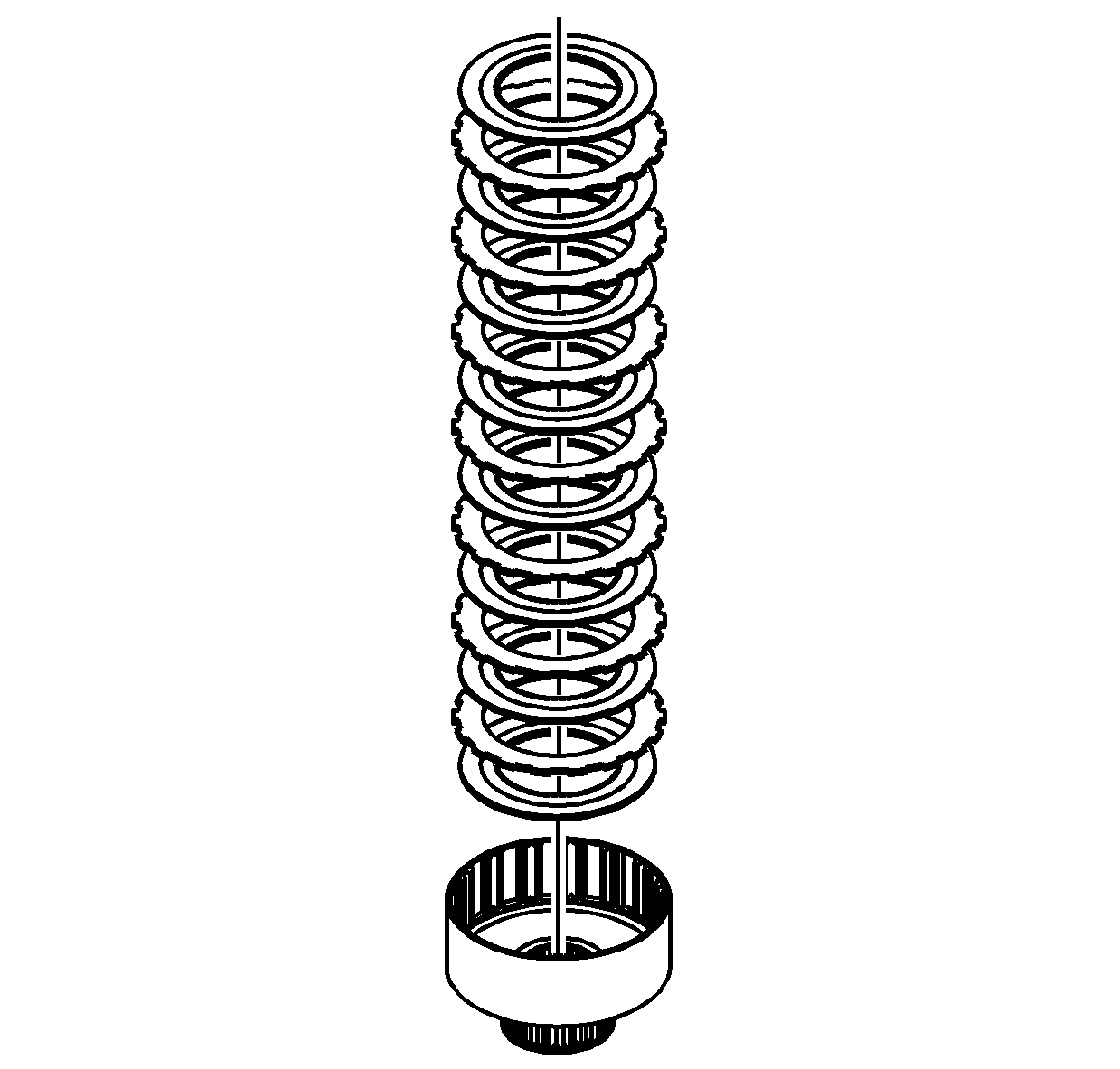
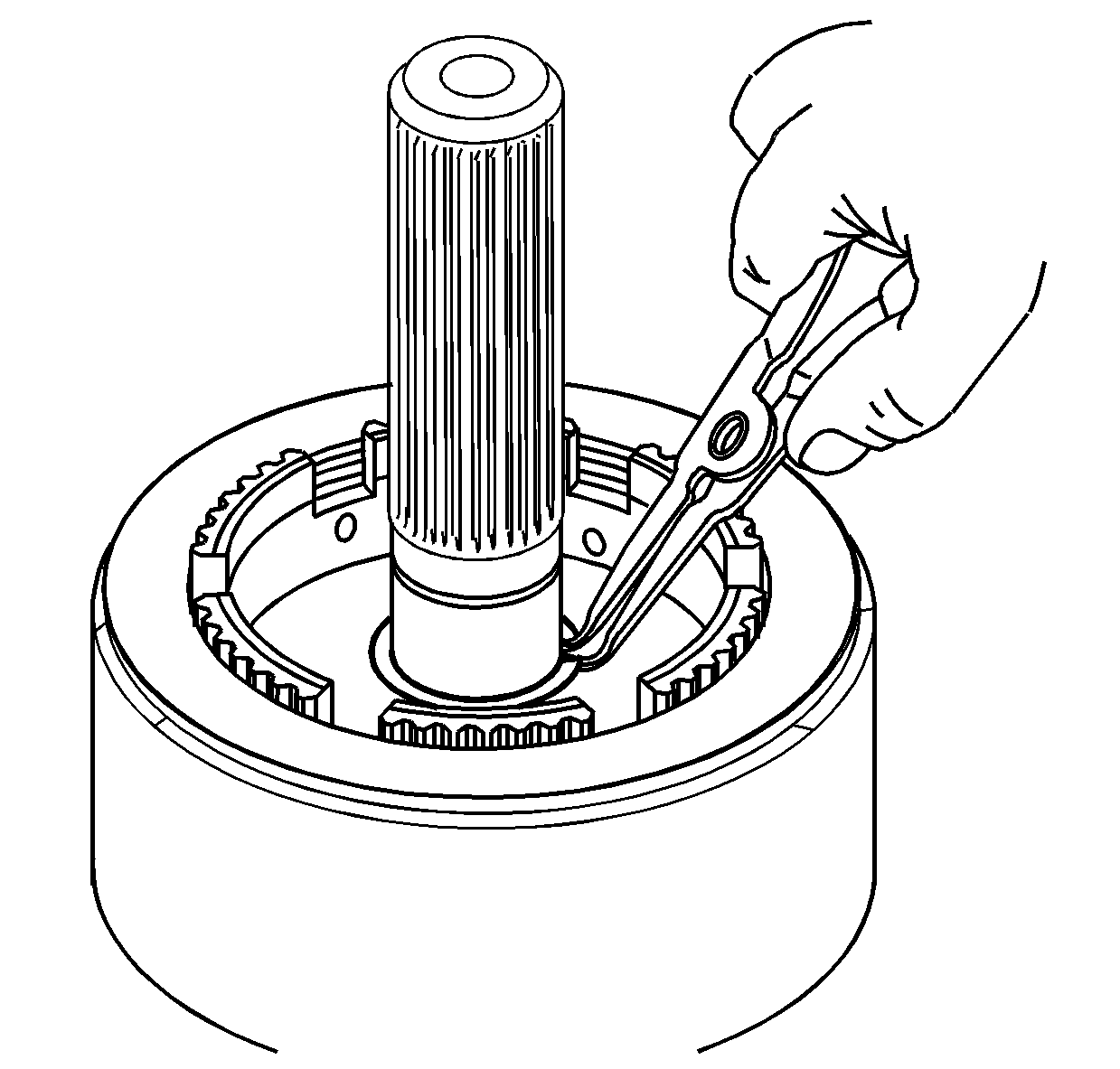
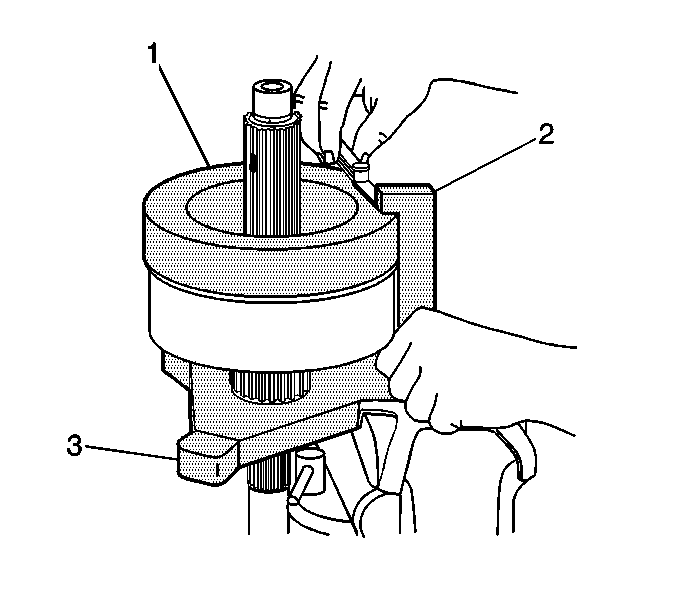
Important: A clutch plate shim package is necessary in order to have the proper shims available for setting the correct clutch pack preload. Improper preload can cause driveability concerns and failure of the transfer case.
Important: The specification is the average clearance remaining between the weight (1) and the gage block (2).
Important: Measure the clutch shims in the center area of the shim. The shims may have a burr or ridge around the inner or outer edge causing an incorrect measurement. The available shims may not combine to the desired measurement.
The shims in the clutch plate shim package are the following thickness:
| • | 0.30 mm (0.12 in) |
| • | 0.56 mm (0.022 in) |
| • | 0.81 mm (0.032 in) |
| • | 1.04 mm (0.041 in) |
| • | 1.30 mm (0.051 in) |
| • | 1.55 mm (0.061 in) |
| • | 1.80 mm (0.071 in) |
| • | 2.08 mm (0.081 in) |
Important: After obtaining the desired thickness of shims, do not remove the clutch plates from the drum. Removing and then installing the clutch plates could change the measurement.
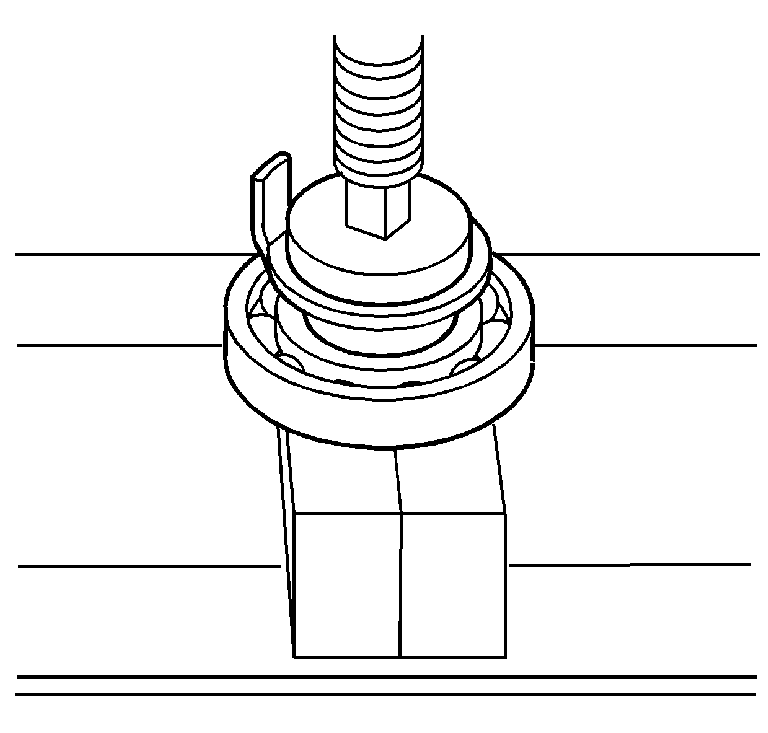
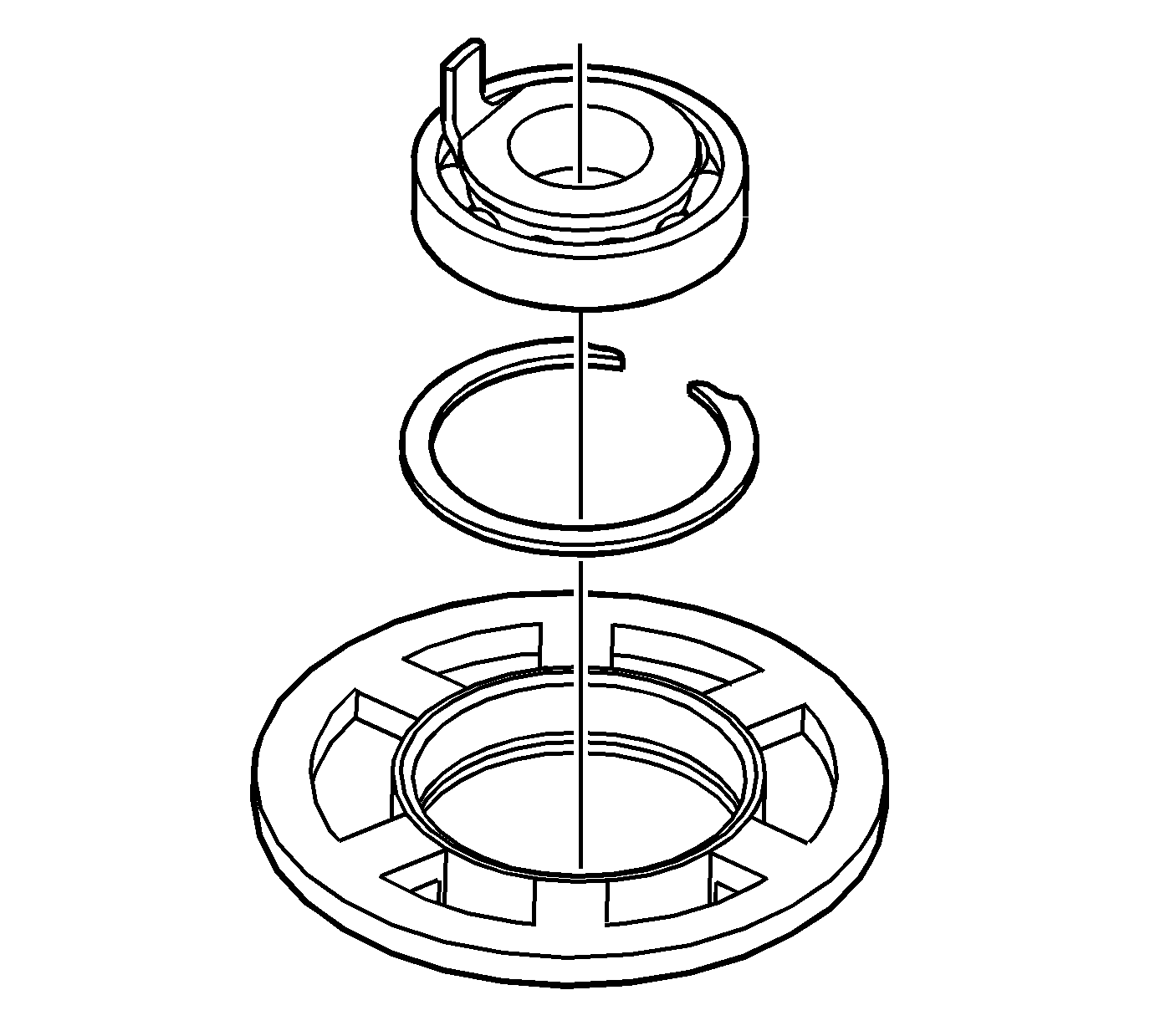
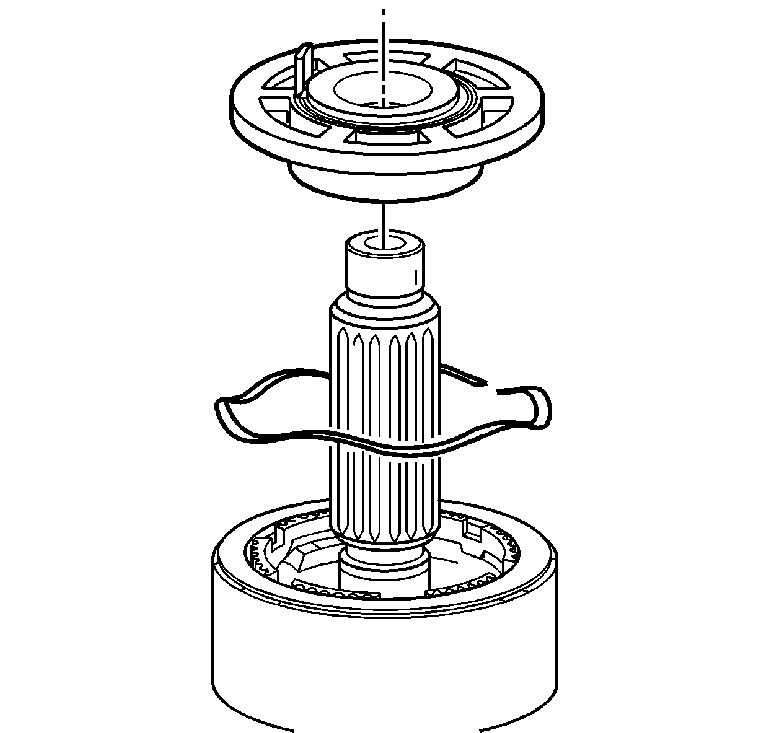
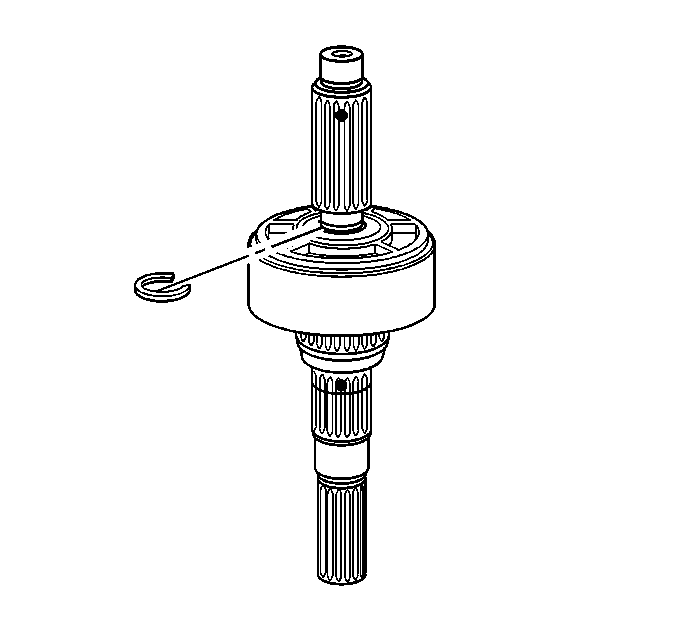
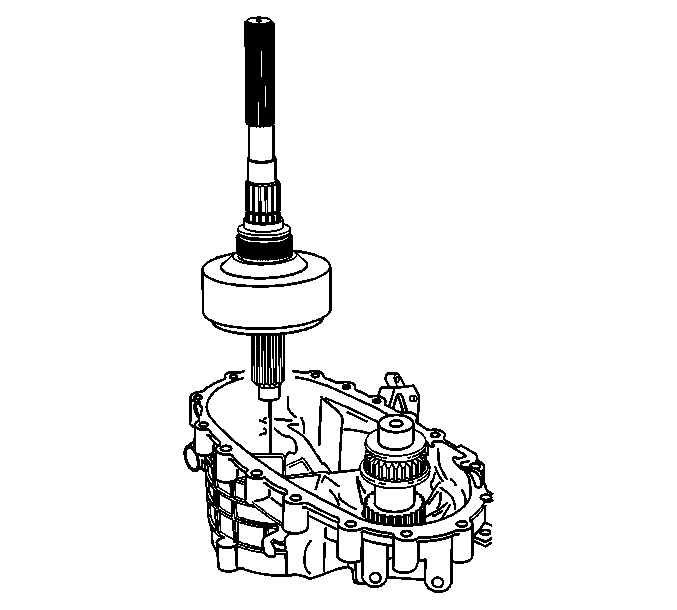
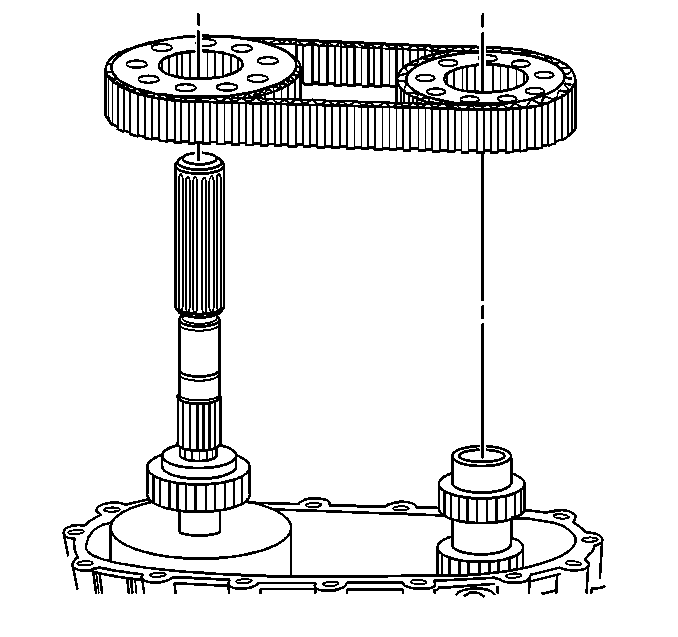
Important: Ensure that the relationship marks used to remove the drive chain and sprockets are aligned for proper installation

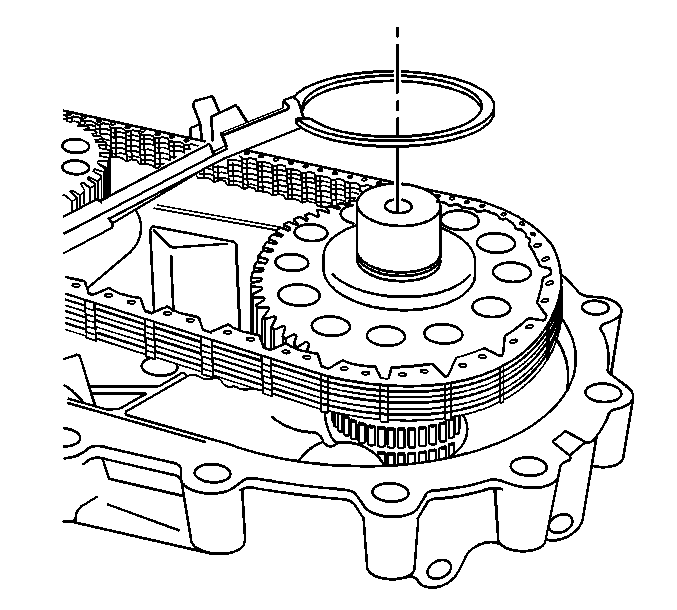
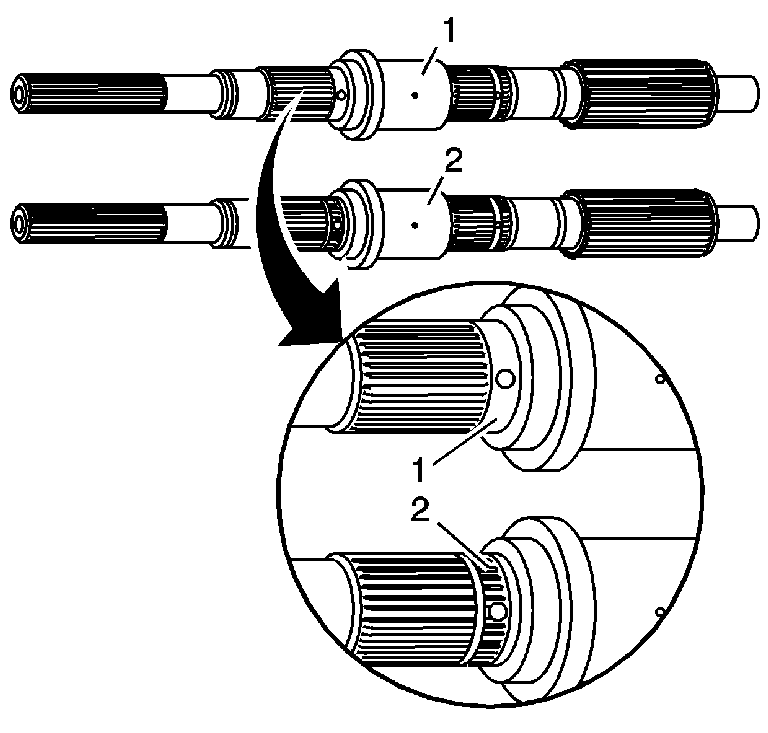
Important: The rear output shaft may be an original design (2) or the replacement design (1). The original design rear output shaft (2) uses an oil pump wave washer above the oil pump and a retaining ring under the oil pump. The original design rear output shaft (2) is identified by the splines in the area by the oil gallery hole. The replacement design rear output shaft has a smooth area by the oil gallery hole. Ensure to follow the steps for the correct rear output shaft.
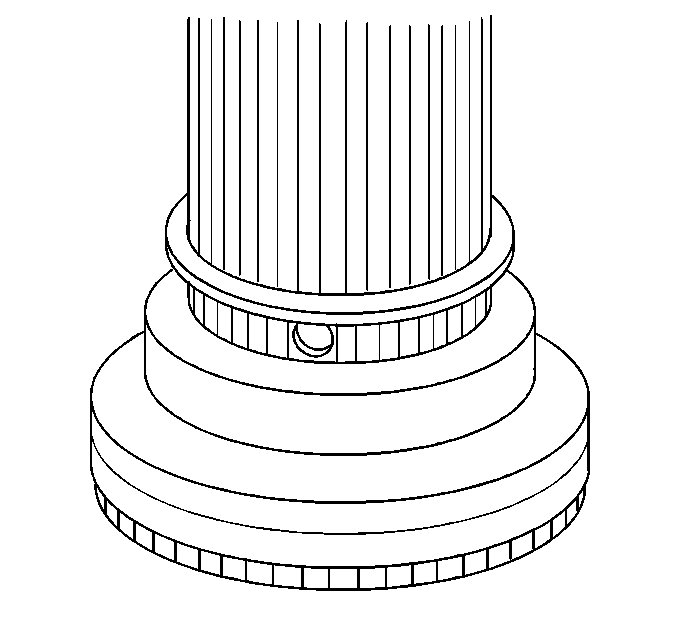
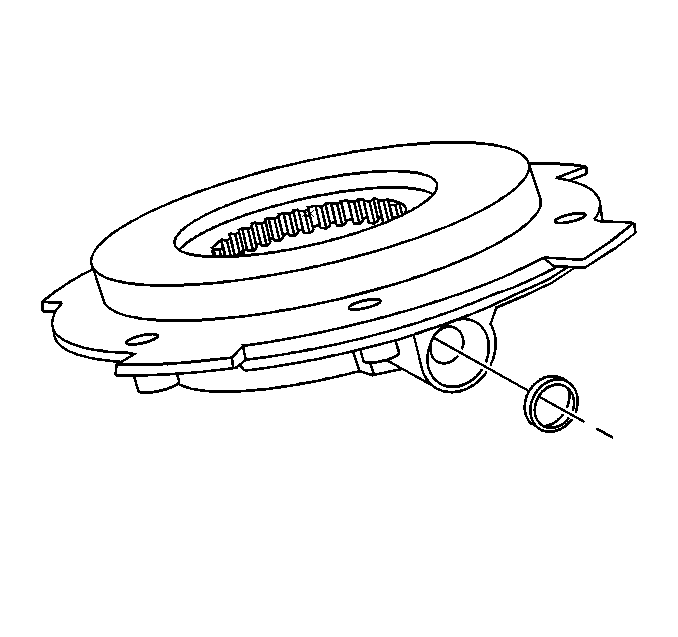
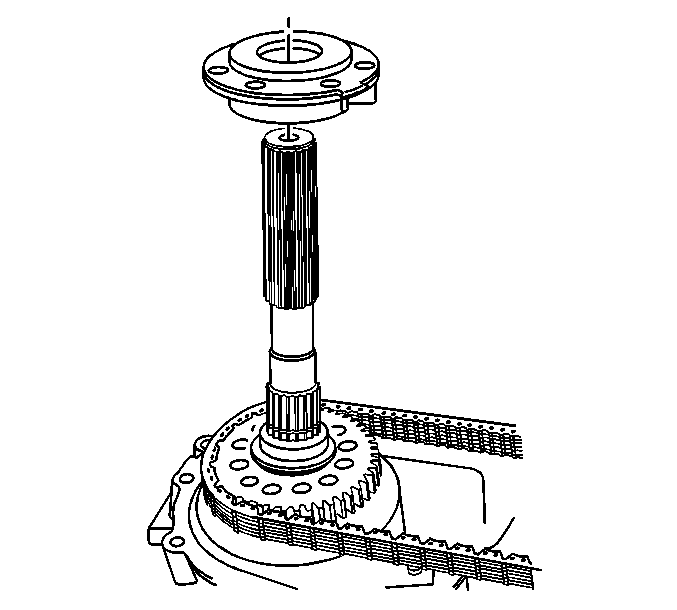
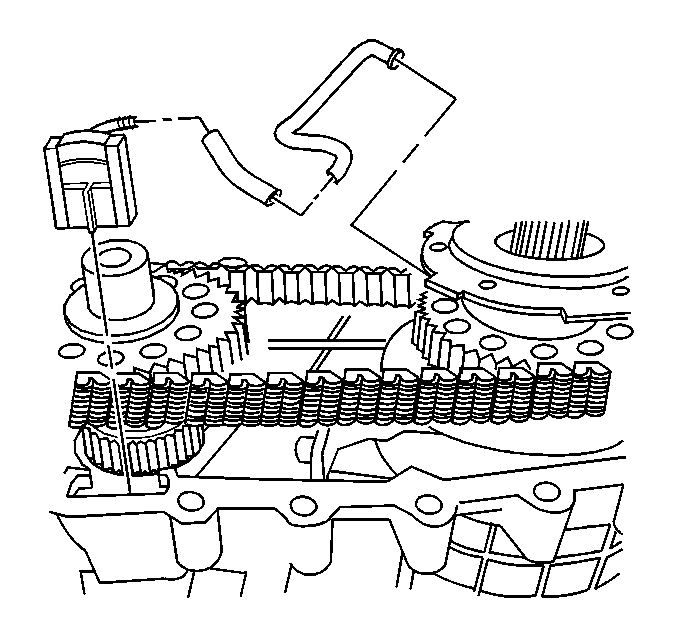
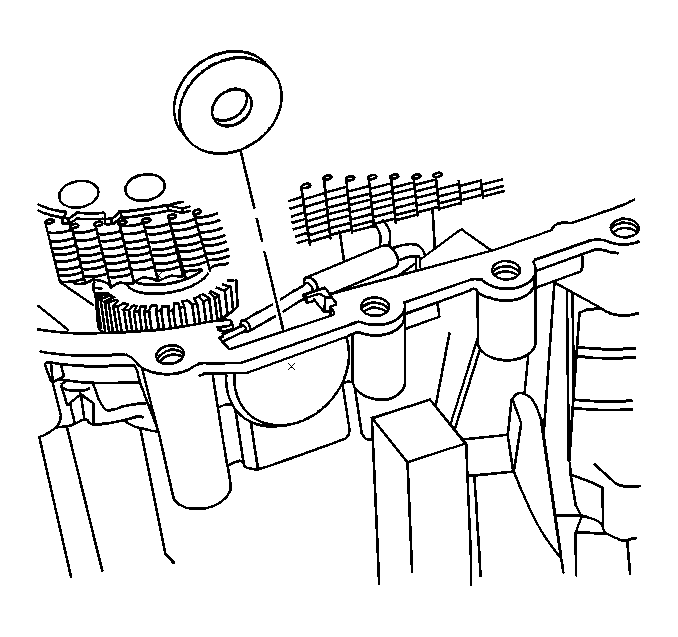

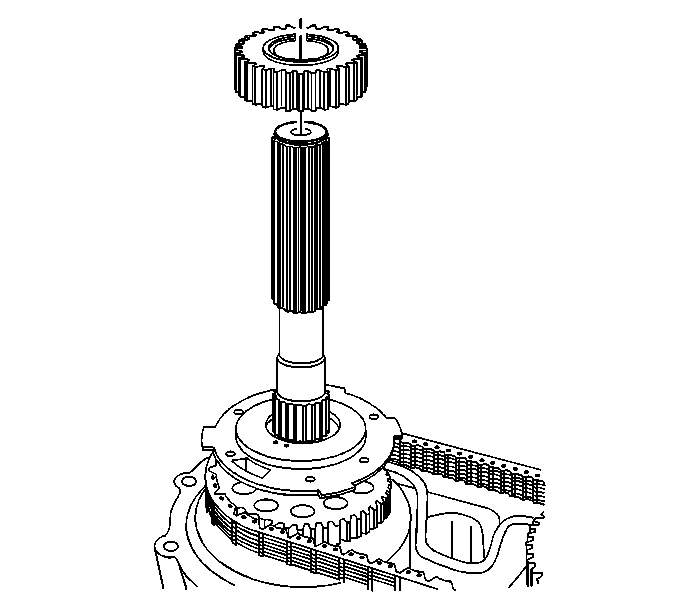
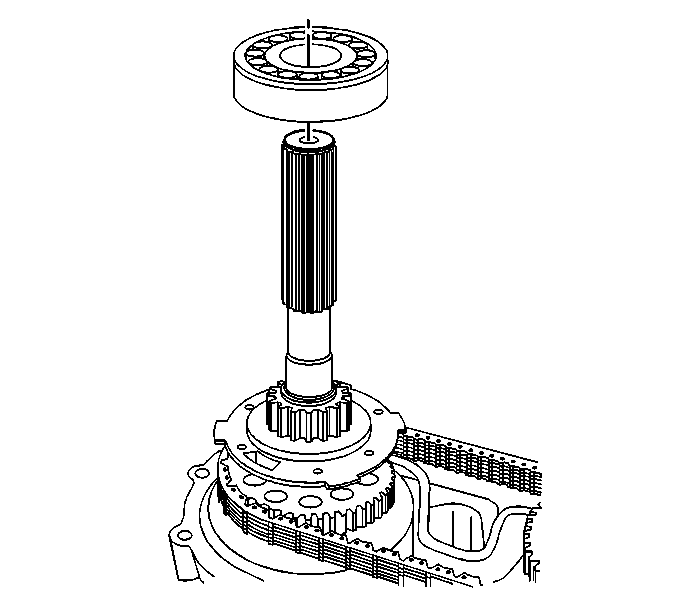
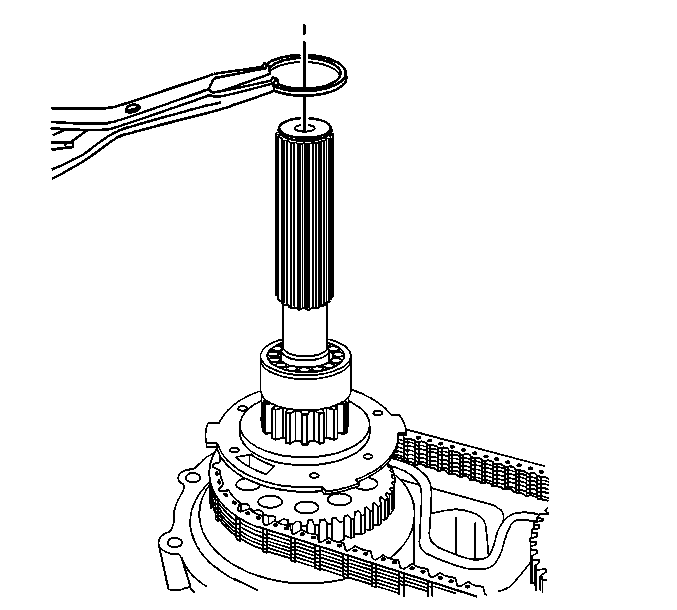
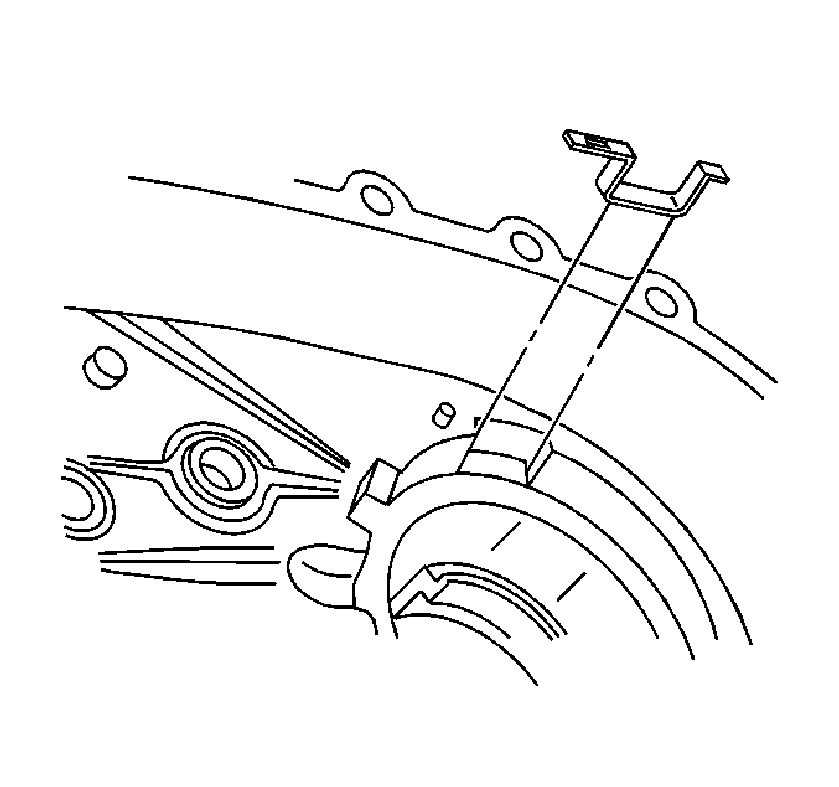
Important: A new oil pump wear sleeve may have a star shaped hole or a spring clip hole.
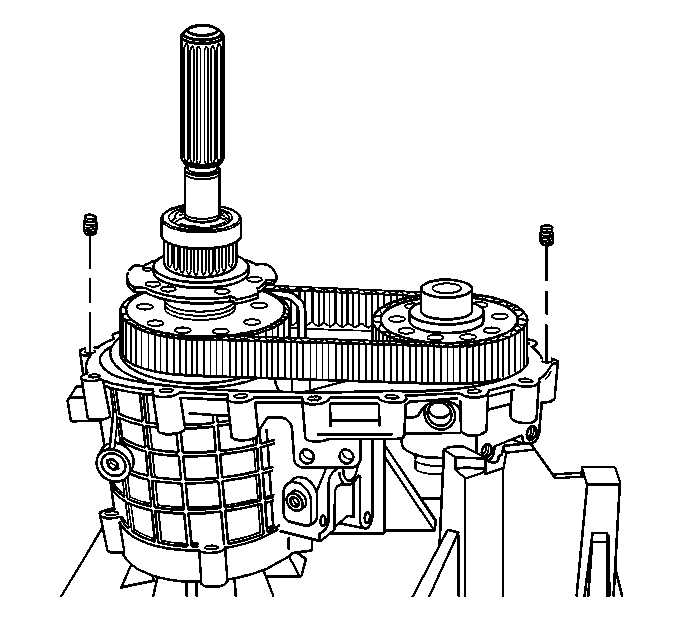
Important:
• Ensure the locating pins are installed in the front case half. • Ensure that the sealing surface on the front case half and the rear case half are free of dirt and cleaning solvent.
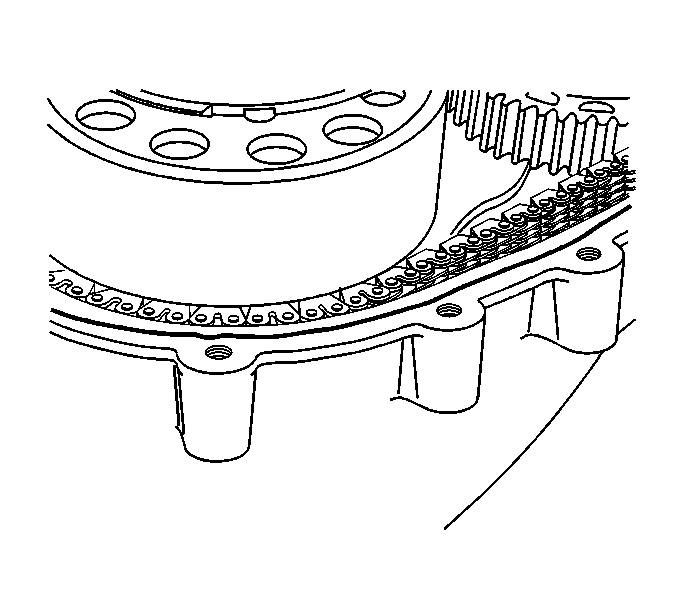
Notice: Apply the proper amount of sealant to the flange when assembling the transfer case. Excessive amounts of sealant can plug the oil pump screen, resulting in internal component failure.
Important: Ensure both sealing surfaces of the front and rear case halves are free of dirt, oil, and cleaning solvent.
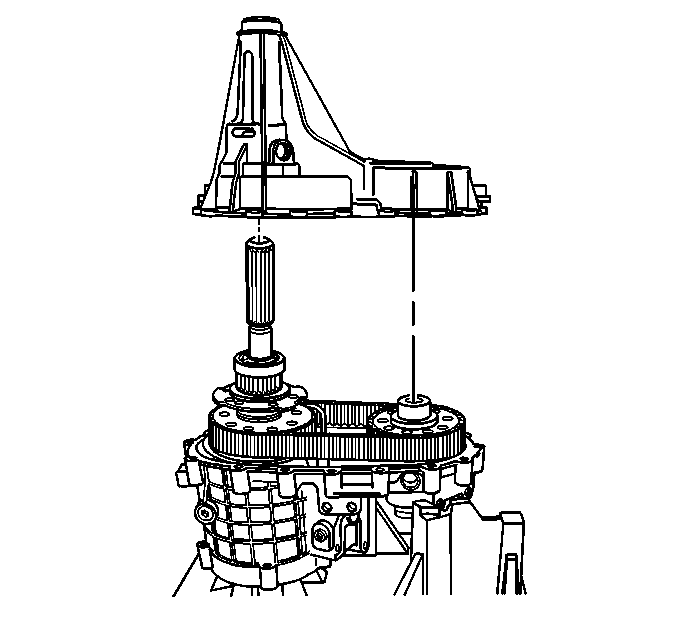
Important: Before the rear case half is installed on the mainshaft, ensure that the outer retaining ring for the rear output shaft bearing is aligned with the access opening.
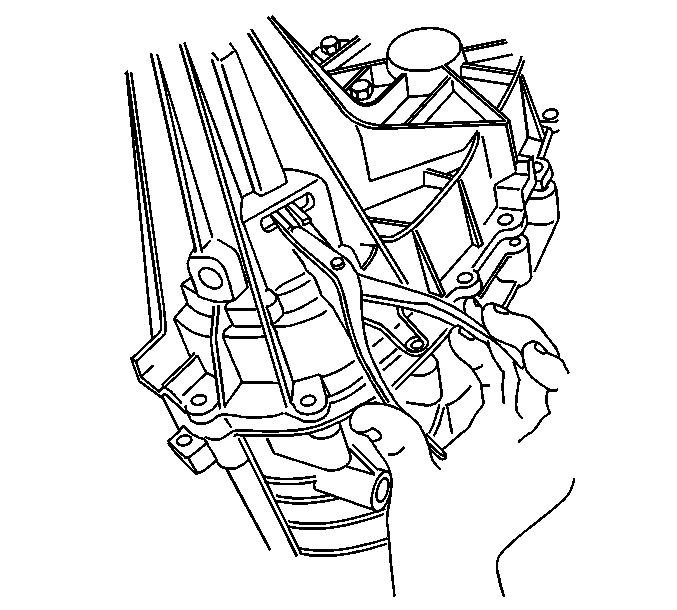
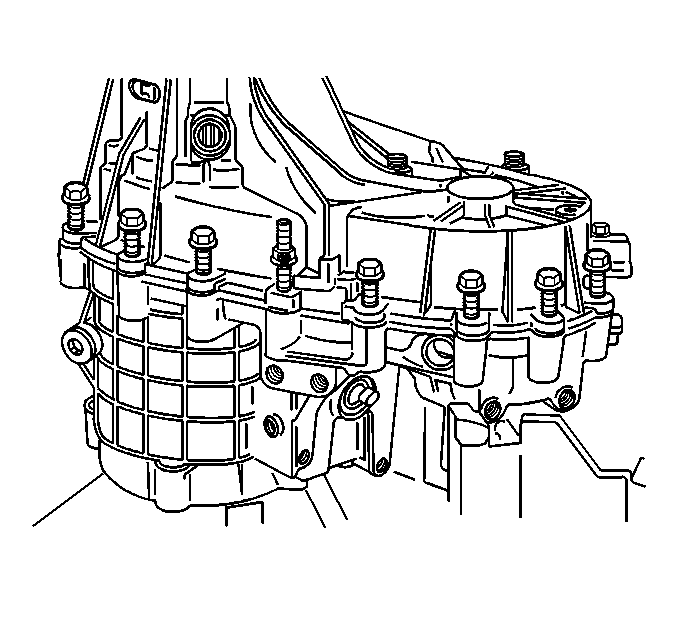
Notice: This component is made of magnesium. Proper assembly is required to prevent damage. Ensure the magnesium transfer case housings are properly insulated from all external steel components, or galvanic corrosion will occur. New nylon coated case bolts and aluminum washers must be used. Use only aluminum fill and drain plugs. Use only aluminum brackets under the case bolts. Ensure new seals are installed that have a rubber insulated outside diameter and have no tears or cuts. Extensive damage will occur if there is galvanic corrosion between the magnesium and steel components.
Tighten
Tighten the case half bolts to 37 N·m (27 lb ft).
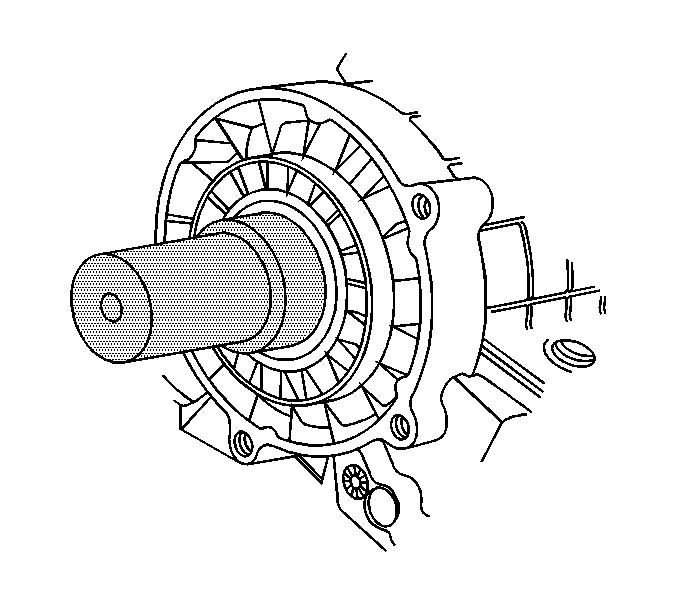

| 82.1. | Install the bushing on the finger section of the J 45380 . |
| 82.2. | Install the finger section to the main body of the J 45380 . |
| 82.3. | Position the bushing and tool to the case. |
| 82.4. | Using a hammer and the J 45380 , install the bushing. |
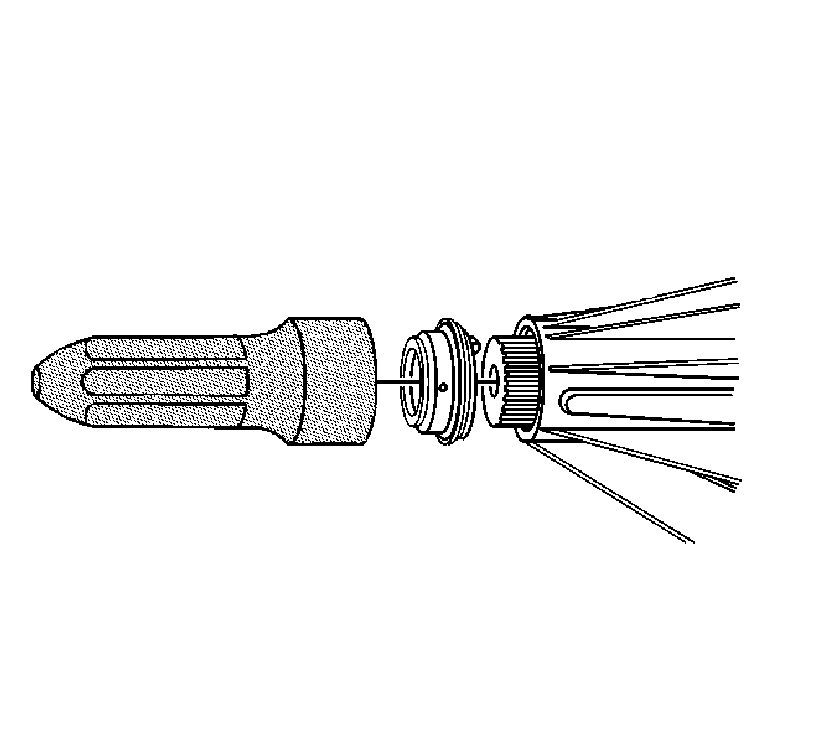
Important: When installing the rear output shaft seal, ensure that the drain hole is facing down.
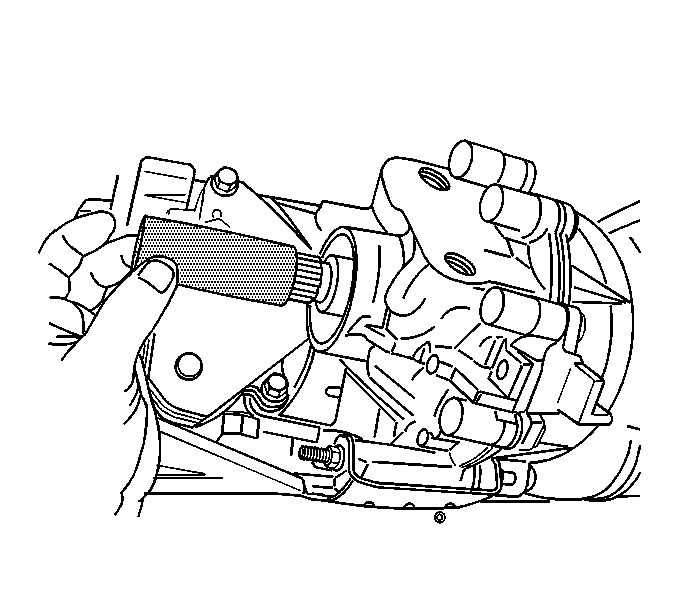
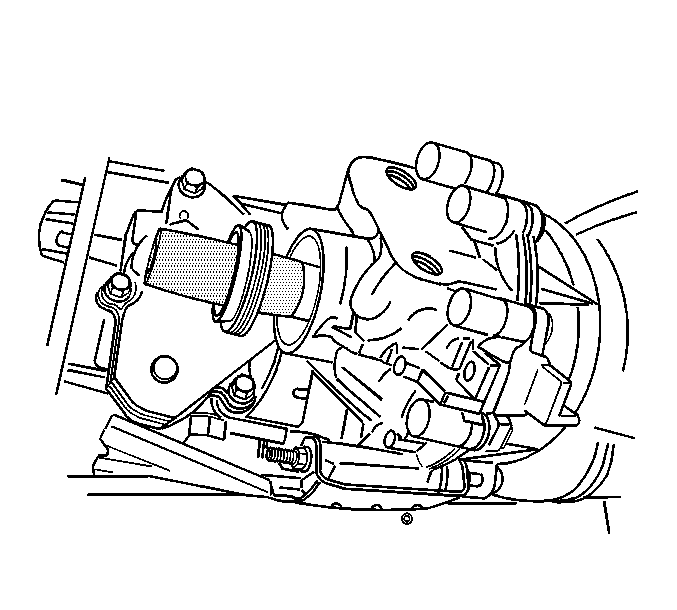
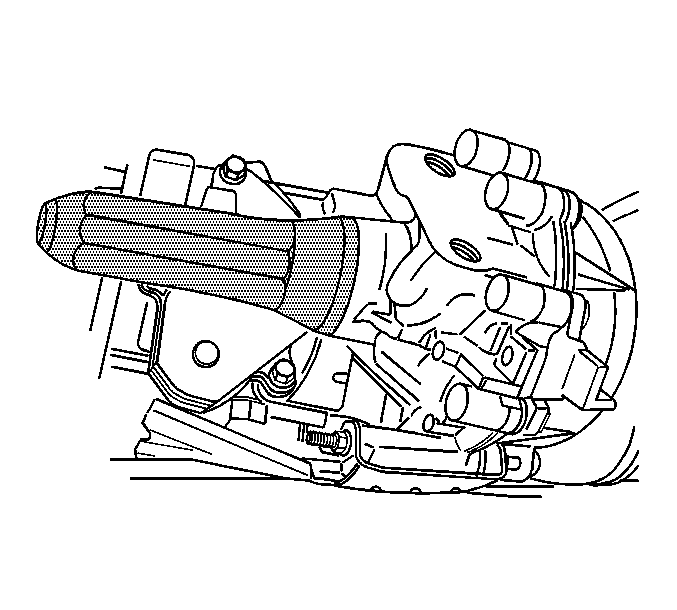
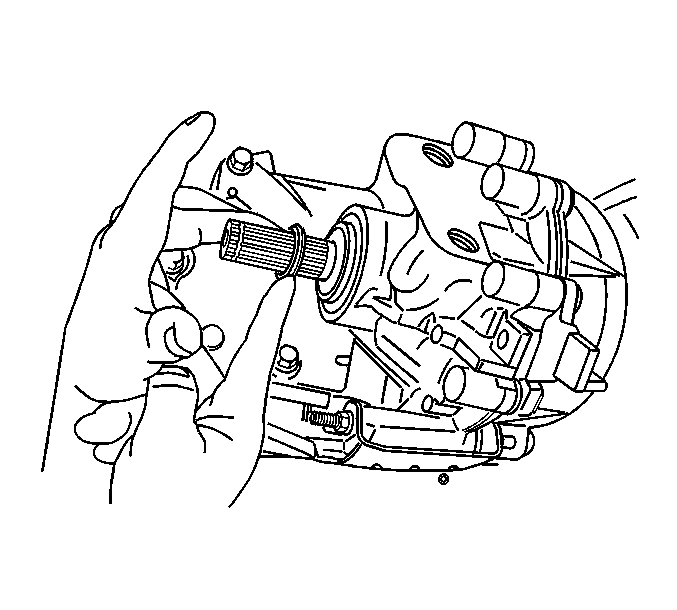
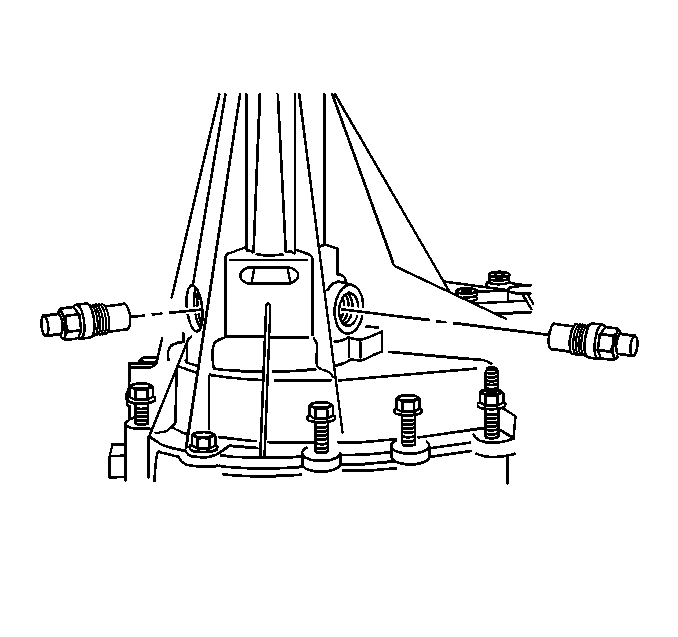
Tighten
Tighten the left rear VSS to 15 N·m (11 lb ft).
Tighten
Tighten the right rear VSS to 15 N·m (11 lb ft).
Tighten
Tighten the front VSS to 15 N·m (11 lb ft).
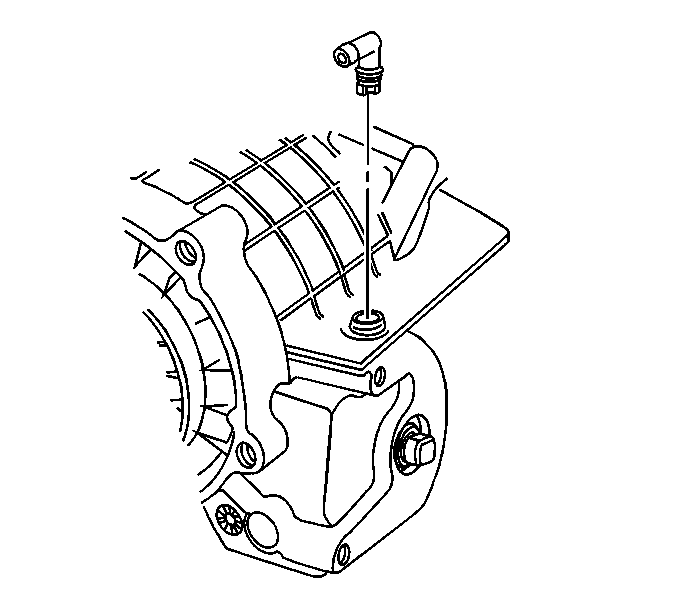
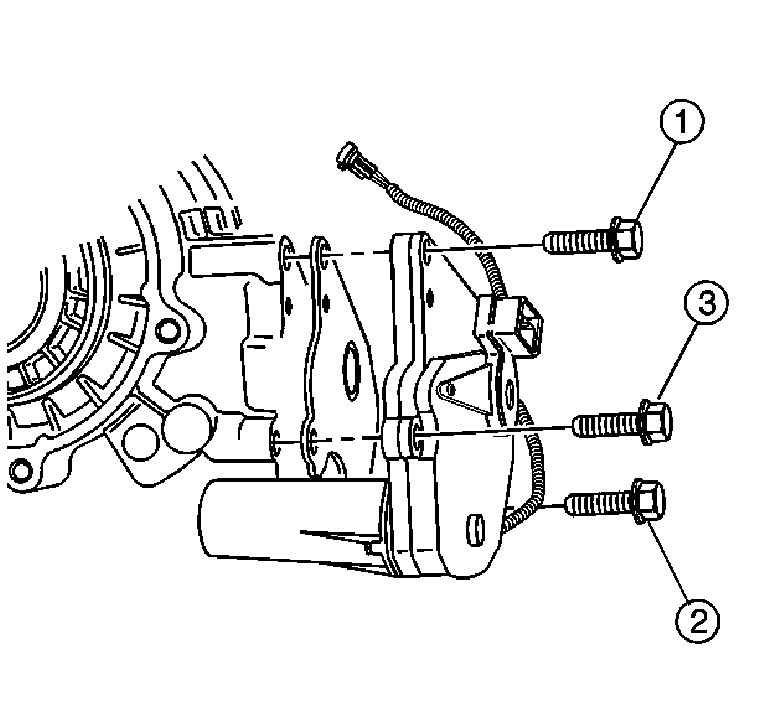
Tighten
Tighten the encoder motor mounting bolts, in the sequence shown, to 20 N·m (15 lb ft).
